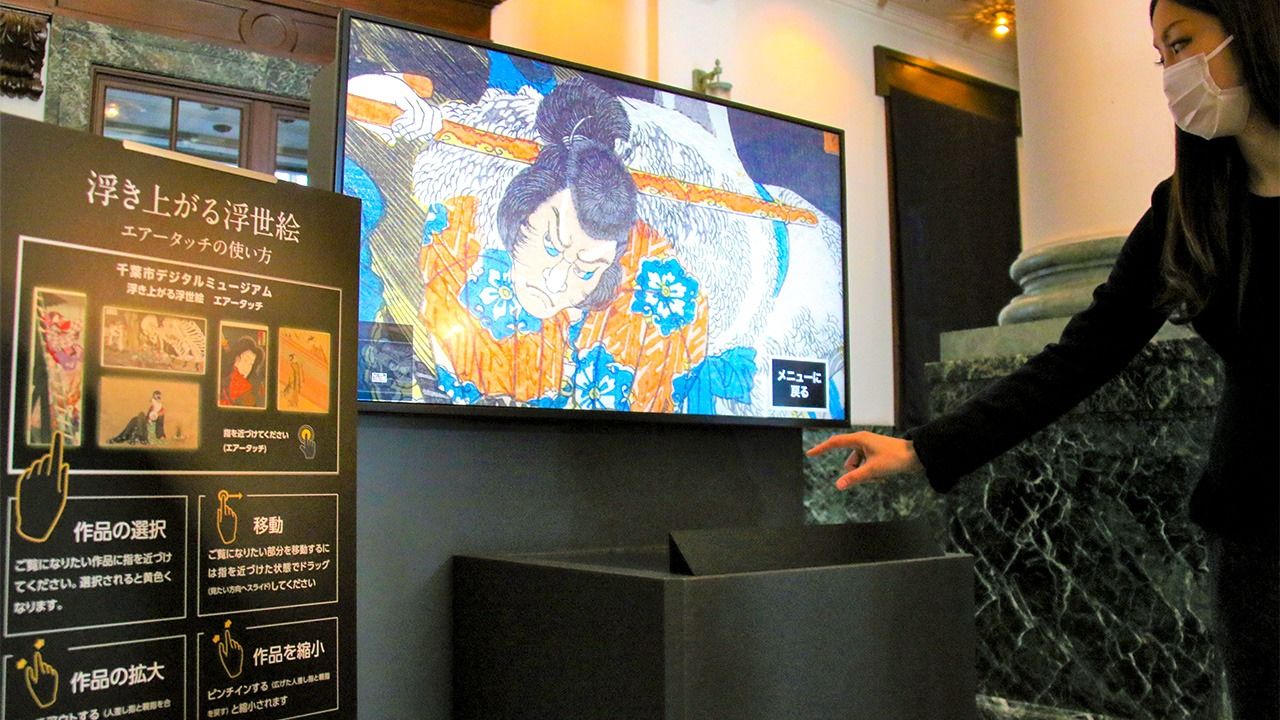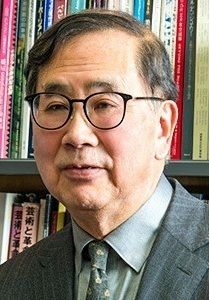
COVID and the Future of Japanese Museums
Culture Society Arts- English
- 日本語
- 简体字
- 繁體字
- Français
- Español
- العربية
- Русский
On April 7, 2020, the Japanese government declared a state of emergency in response to the COVID-19 pandemic, and Japan’s museums promptly closed their doors to the public. The closures, which continued until the state of emergency was lifted about two months later, left museums scrambling to adjust their schedules and rethink their basic mode of interaction with the public.
Visitors as the Lifeblood of Exhibitions
“A lot of facilities were in the middle of special exhibitions that had started before the state of emergency. In some cases, the exhibitions ended before they were able to open their doors again,” recalls Tatehata Akira. “My own Museum of Modern Art, Saitaima, was holding an exhibition of rare ink paintings by Morita Tsunetomo [1881–1933] when the state of emergency was declared. These subtle ink sketches fade quickly when exposed to light, so one has to rotate them regularly, taking down one batch and replacing them with others. Having no idea when we would be able to open again, we rotated paintings that nobody was coming to see. We found it truly an exercise in futility.”
Although some museums experimented with virtual exhibitions, Tatehata feels that the shutdowns drove home the critical importance of in-person attendance. “Real visitors are the lifeblood of exhibitions,” he says. “The newspapers won’t bother seriously reviewing an exhibition that isn’t open to the general public.”
After the first state of emergency was lifted, many museums reopened under strict safety guidelines, including advance tickets timed to prevent congestion. (Most remained open during the second state of emergency, declared in January 2021.)
“When we reopened with timed tickets and other safety measures in place, people told us time and again what a relief it was to be able to visit,” Tatehata recalls. “I realized that they were coming to the museum in search of comfort and healing as much as to view works of art. It was very gratifying.”
Digital Trial and Error
As the first state of emergency dragged on, institutions expanded their use of digital technology in hopes of recreating the exhibition experience online.
“An exhibition is partly an experience of the museum’s space,” he says. “So, during the temporary closings, quite a few facilities, including the Mori Art Museum and the National Museum of Modern Art in Tokyo, tried offering online users a virtual 360-degree experience using virtual technology similar to [Google’s] Street View. The problem is that, once the novelty wears off, people complain that it actually detracts from their appreciation of the art.
“That said, there are other promising modes of online interaction that we’re experimenting with. For example, there are websites that allow users to click on a work of art to access supplementary material, such as background literature, interviews with the artist, and images of related works that aren’t on exhibit.”
Tatehata believes the use of Internet technology to enhance and supplement the museum experience will continue to expand after the pandemic.
“One of the key functions of museums, in addition to preserving and exhibiting art, is art education. As part of our own museum education program, we offer hands-on arts and crafts workshops in various media. These classes could be conducted remotely or in a hybrid fashion. At Tama Art University, we’re doing something along those lines for our international students who can’t travel to Japan. The students create artworks in their own homes using the materials available to them. They upload images or videos showing the creative process and comment on one another’s work remotely. It should be possible for museums to adapt these techniques to their own educational purposes.”
Death of the Blockbuster Exhibition?
One of the distinctive features of the museum scene in Japan is the prominence of “blockbuster exhibitions” jointly sponsored by major museums and big media companies. These ambitious undertakings, featuring rare art treasures or masterpieces by renowned Western artists, are designed to attract huge crowds on a daily basis, ensuring a handsome return on investment.
“For years, the joint sponsorship approach has worked for both sides. The big media companies supplied the financial and human resources needed to borrow top-tier artworks from overseas collections, publish lavish catalogues, and publicize the events, while the museums provided the display space and curatorial expertise. These exhibitions were often hugely profitable, though the opportunity for co-sponsorship was limited to major museums in Tokyo and other big cities.”
The pandemic undermined the foundations of this business model. Under social-distancing guidelines, packed venues are no longer an option. Interaction with overseas institutions has languished as well.
“In a way, you could say that museums have been forced to return to their original function. I think the pandemic has given us an opportunity to reorient ourselves in terms of how we go about attracting visitors and giving back to the community, as well as our relationship to tourism.”
Museums and the Market
Former Prime Minister Abe Shinzō’s economic revitalization policy focused heavily on inbound tourism as a key to long-term economic growth. From 2012 to 2019, the number of people visiting Japan from abroad roughly quadrupled, and museum attendance benefited as a result. That trend came to an abrupt halt in 2020.
“In recent years, foreign tourists have accounted for a big share of museum attendance in Japan,” says Tatehata. “Of course, any museum is delighted to be seen as a tourism resource. But the value of a museum goes beyond its contribution to the economy.”
That brings us to the controversial “Leading Museums” concept floated by a government panel in 2018. Noting that many Japanese museums were on a weak financial footing, the proposal called for tax changes and other reforms to encourage designated museums to put some of their acquisitions back on the market. The idea was to boost the financial resources of “leading museums” and promote the development of a few world-class collections, further stimulating inbound tourism.
“The proposal elicited a fierce reaction from the museum community,” recalls Tatehata. In June 2018, the Japanese Council of Art Museums, which Tatehata chairs, released a statement asserting that direct market involvement should not be the aim of museum operations. A museum, the statement said, is a “nonprofit social and educational institution” whose purpose is “to systematically build a collection” in keeping with its own collecting policies and “preserve it in good condition for future generations.” It should “draw a clear line” between that mission and collecting as a mode of investment.
The proposal appears to have been shelved.
Securing Support for Innovative Programs
The “Leading Museums” concept may have been the wrong prescription, but the financial ailments the panel identified are real. Most Japanese museums depend on government funding, which is limited, and lack the resources to undertake ambitious programs. This is one reason big media have played such a key role in organizing major exhibitions.
“I suppose it’s a good thing that visitors have those opportunities to view van Goghs and Picassos, but there’s too much focus on sure-fire crowd pleasers and too little support for innovative projects or exhibitions introducing other important though less famous artists.”
In the West, media-museum tie-ups are very rare. In Europe, museums are often supported by generous government subsidies. In the United States, private endowments, admission fees, and tax-deductible donations support the operations of major museums like New York’s Museum of Modern Art. Donations of artworks are also tax deductible.
“It’s open to debate whether the US model is the best,” says Tatehata, “but Japan should certainly offer more generous tax breaks to potential donors. If institutions could rely more on funding from individual and corporate donations, they could afford to get more creative in their exhibition planning, instead of always worrying about the bottom line. Crowdfunding might be another option to explore.”
Belated Relief for Artists
Most publicly supported Japanese museums are not in imminent financial peril. In fact, many actually saved money on costly exhibitions during the temporary closures. In the art world, the biggest victims of pandemic-related restrictions have been private galleries and the contemporary artists whose works they show and sell, says Tatehata.
As part of the second supplementary budget for fiscal 2020, the central government earmarked a total of ¥50.9 billion in subsidies to “support continuation of cultural arts and sports activities.” The arts allocation was the result of vigorous lobbying by Geidankyō, which represents performers and performing arts organizations, and it was only expanded at the last minute to include freelance artists.
“The government’s not going to move on behalf of artists unless they can make their voices heard,” explains Tatehata. “Plus, there’s a popular perception of contemporary art as being obscure and inaccessible, which probably makes it a lower priority in some people’s minds. I think educating the public about contemporary art is one of the key missions of art museums today.”
In July 2020, the Agency for Cultural Affairs began accepting applications for relief aid for unaffiliated artists whose activities had been adversely impacted by the pandemic—for example, painters who were unable to display their works at galleries. In hopes of expediting the process, the Agency for Cultural Affairs established an authority for certifying eligible artists in collaboration with the Japan Artists Association.
Unfortunately, the certification and application process proved complicated and time consuming, and even those who were approved had to wait weeks for the funds to materialize. Still, Tatehata views the establishment of a relief apparatus as progress.
Museums as Community Media
Ultimately, however, Tatehata believes that museums must expand and diversify their role in community culture.
“Museums can’t survive without the support of civil society,” says Tatehata. “They say that civic awareness has been slow to develop in Japan for historical reasons. I would like the Japanese people to regard the nation’s museums as their own, since they support them with their taxes. And I would like the museums to play a pivotal role in nurturing a stronger civic awareness among local residents.”
How, specifically, does Tatehata propose to do that?
“The primary way in which museums serve the people is by displaying fine works of art for them to see. But museum education is also important. Museums can serve as a community venue for lectures, symposiums, and concerts. Furthermore, museum space can function as an information medium in its own right, opening up all kinds of creative possibilities. For example, I would like to try staging plays that move around inside the museum, integrating different galleries into the performance. Even without blockbuster exhibitions, I think we can survive as cultural hubs in our respective communities.”
Museums will doubtless continue to mobilize digital and remote technology even after the COVID-19 crisis has subsided. But the pandemic may also reawaken people’s appreciation of the kind of direct, live experience that only a museum can offer. “It’s possible that all these virtual exhibitions will end up boosting demand for the real thing,” he speculates.
In many Western cities, the pandemic has led to extended closures, forcing major museums to lay off staff in an effort to make ends meet. Cultural institutions around the world are facing an existential crisis as they grapple with changing modes of cultural interaction. Even amid this upheaval, Tatehata believes that museums have a unique and essential role to play and will not merely survive but thrive in post-pandemic Japan.
(Originally published in Japanese, based on an interview by Itakura Kimie of Nippon.com. Banner photo: In early January and February 2021, the Chiba City Museum and two other municipal facilities hosted the exhibition “Digital x Ukiyo-e,” a “contact-free” interactive digital display featuring high-resolution reproductions of famous ukiyo-e prints in the museum’s collection. © Jiji.)
